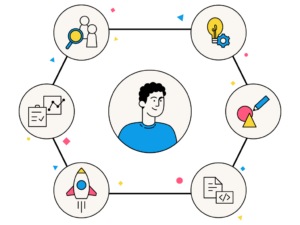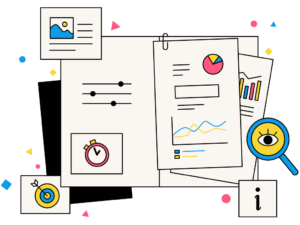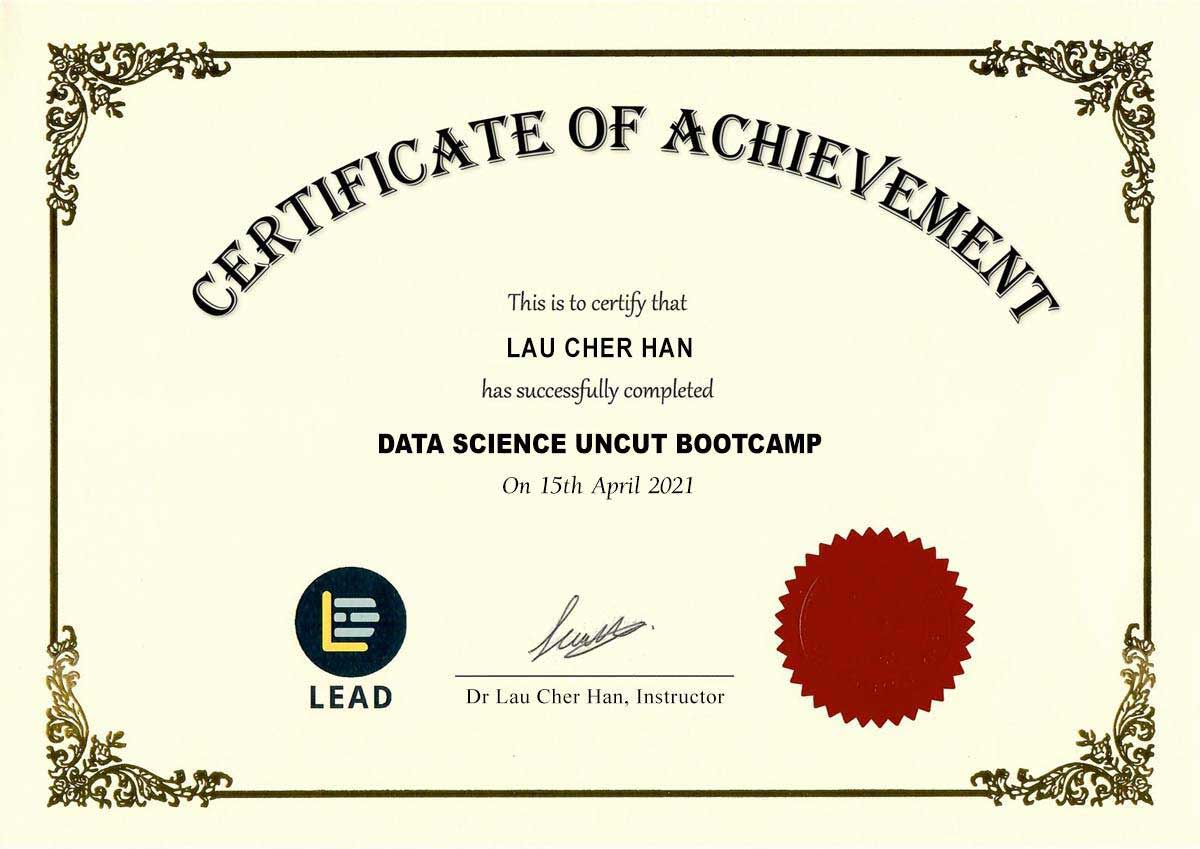Have you always been looking to switch to a data analyst career but don’t know where to start?
In this blog post, I outline a 5-step approach that you can follow to find your dream data analyst job in Malaysia.
5 Steps to become a data analyst in Malaysia
1. Do the research

Many people think that data analyst is a generic position.
It’s not.
If you look closely, there are not many companies hiring for the position “data analyst“
Instead, they are hiring data analysts with a specialization.
For instance, in banking, we have finance analyst, their job is to assess the market and find good investment opportunities.
We also have fraud analysts in e-commerce, their job is to identify potential suspicious transactions.
In tech companies, we have web analysts that look after the performance of a website, and social media analysts that keep track of the engagement of social media.
The list goes on, but you get the idea.
Each of these jobs requires unique skills and responsibilities.
Go to job listing sites like JobStreet, Indeed, or Hiredly, and browse through the analyst jobs in your industry.
Then, shortlists 20 positions that suit your interests. You will form a common theme. You can learn the key characteristics and requirements for each of the analyst job.
2. Pick up the key skills

Next, we need to become qualified for these jobs.
Go through the jobs that we identified earlier, and identify 2-3 skills that were most mentioned.
Not all job requires Python like what everybody thinks. Especially if you are not working on unstructured data, or real-time big data.
For example, a business data analyst will need to be good in SQL and BI (Business Intelligence) tools like Tableau or PowerBI.
A web analyst will need also need to know pull data from Google Analytics and Facebook, and combine them together.
A customer service analyst will need to know how to use NLP (Natural Language Processing) to analyze customer comments.
Pick up two to three key skills in your field is sufficient to start. You can learn other skills on the job later.
3. Work on projects using real data

Now it’s time to put our skills to the test.
To solidify your skills, work on real-world projects or participate in Kaggle competitions.
Apply your knowledge to solve practical data problems, analyze datasets, and derive meaningful insights.
This hands-on experience will enhance your problem-solving abilities and provide valuable portfolio material.
Where you can find Malaysia datasets
In case you are looking to join a local company with strong presence, e.g. Khazanah, Petronas, or other GLCs and ministry departments, here are a few sites where you can find related datasets.
4. Build a portfolio

A portfolio might sound fancy, but it’s simply a group of your past projects presented in a logical way.
Of course, we don’t want to just dump all our projects together.
We want to organize it by themes, topics, or even better, a coherent story around it.
Take a look at the portfolios from our past students in Data Science 360 and the Data Science Uncut Bootcamp.
These portfolio have either helped them to get promoted to a data position in their current company, or to get a data analyst job.
5. Begin job search
A good resume is a ticket to impress the HR and get past the door.
Watch this video for some tips on how to edit your resume.
Key elements in a good resume
A good data analyst resume should include:
- Short and simple resume
- Recent past projects with measurable results
- Relevant skills with tangible outputs
How many jobs should you apply?
You should apply as many jobs as possible. Not just to the company that you are interested.
This is to get yourself warm up and have a much better understanding of the job market.
Attend a few interviews, so that you can gauge the vibe, understand the questions that interviewer ask, and also the job market.
When you finally get an interview from your dream company, you will be more relaxed, less nervous, and perform much better.
Nervousness is actually the main reasons that people flunk their interview.
Customise your resume
Ideally, you should have a customised resume for each of the job you are applying.
If it sounds too difficult for you, at least prepare 4-5 different versions for different industries.
This is the easiest way to stand out among other candidates. You want to stand out and catch the attention of the HR.
Following templates and best practices are good, but it also make you boring. A simple way such as moving your past projects sections before your education, can make a lot of difference.
How to obtain the skills needed for a data analyst?
Degrees
Most entry-level data analyst positions require at least a bachelor’s degree. It does not need to be a specific data analytics degree, other related fields are acceptable as long as you have the necessary foundations.
Some of the common degrees are:
- Data science: focus on statistics and specializations like predictive analytics.
- Computer science: emphasize statistical and analytical skills
- Statistics or applied maths: Methods and techniques that solve business problems.
- Economics: Focus on statistical business analysis.
- Information technology (IT): covers database design, data management and business theory.
Professional Certification

Having a professional certification in data analytics will give you a boost in your resume.
If you’re new or switching careers, a professional certificate can get you up to speed in a shorter timeframe, usually in days or weeks, compared to years of study in a degree.
Certifications also keep your knowledge up-to-date and make sure you have the right skills the company needs.
Some of the popular and widely recognized certifications are:
Google Data Analytics Professional Certificate (link)
Google Data Analytics Professional Certificate is a flexible online program designed for beginners, it takes about 6 months to complete.
It covers essential skills like data cleaning, visualization, analysis, and using tools like spreadsheets, SQL, and R programming
LEAD Data Science 360 Certification (link)
This is our flagship program that has helped thousands of individuals to transition into a data career. We have also helped companies like IBM, Intel, Sunway to upskill their employees.
Microsoft Certified Power BI Analyst (link)
This certification is ideal for those with some experience in data processes and repositories.
It focuses on using Power BI for data visualization and business analytic
Pro tip: When choosing a certification, look for the ones that do not tie you to a vendor, or using tools that are not popular or not your company needs.
Focus on the techniques like SQL, data analytics, interactive dashboards, rather than tools from a specific vendor.
Self-learning
Learning on your own is flexible and usually doesn’t cost much.
But, self-learning can be tricky because it doesn’t have a set plan. You need to have clear goals and know exactly what you want to learn.
Another challenge is staying disciplined and getting support. When you get stuck, you often have to wait for 2-3 days for someone in a forum to reply you, before you can move on.
Here are a few good resources for self-learning data analytics:
- Statquest: A YouTube channel that breaks down statistical methods into bite sized steps.
- W3Schools SQL – SQL tutorials from basics to intermediate with examples.
- r/datanalysis – A subreddit focus on data analysis.
What is the difference between a Data Analyst and a Data Scientist?
The roles of data analysts and data scientists, while both centered around data, differ significantly in terms of responsibilities, required skills, and career paths.
Here is a detailed comparison:
Roles and responsibilities
Data analyst
- Data Collection and Preparation: Data analysts collect, process, and clean structured data to ensure its accuracy and usability.
- Reporting and Visualization: The main part of a data analyst’s job is to create reports and dashboards using tools like Excel, or PowerBI, to keep track of signals of trends from the data.
- Descriptive Analytics: Data analysts focus is on descriptive analytics to describe what has happened based on historical data.
Data Scientists
- Manage data workflow: Data scientists setup data workflow to process data for advanced analysis.
- Predictive Modeling: Data scientists use machine learning algorithms to build predictive models that forecast future outcomes based on historical data.
- Prescriptive Analytics: Beyond predicting outcomes, data scientists also offer prescriptive analytics, which they advise on possible actions to achieve desired outcomes.
- Cross-Functional Projects: Data scientists often join projects that involve stakeholders from multiple departmentd ws, including engineering, product development, and executive leadership.
Conclusion
Data analyst is a challenging and fun job.
The demand for data analysts will grow as long as we continue to generate data.
However, there are still many companies that are keen to onboard a digital transformation journey, but they are not too sure who to hire first, what are their job scope, and how to manage them.
It’s our job as a data analyst to work together with the market, and make sure that we help the company to maximize the value of their data.
With all the progress in AI in Malaysia, there’s a big focus on making decisions based on data. So it’s a great time to start a career as a data analyst.
By staying curious and open to new trends and technologies, you can do well as a data analyst and help industries in Malaysia and beyond.


0 Comments